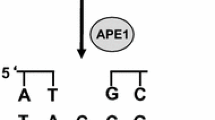Abstract
Single Nucleotide Polymorphism (SNP) researches have become essential in finding out the congenital relationship of structural deviations with quantitative traits, heritable diseases and physical responsiveness to different medicines. NBN is a protein coding gene (Breast Cancer); Nibrin is used to fix and rebuild the body from damages caused because of strand breaks (both singular and double) associated with protein nibrin. NBN gene was retrieved from dbSNP/NCBI database and investigated using computational SNP analysis tools. The encrypted region in SNPs (exonal SNPs) were analyzed using software tools, SIFT, Provean, Polyphen, INPS, SNAP and Phd-SNP. The 3’ends of SNPs in un-translated region were also investigated to determine the impact of binding. The association of NBN gene polymorphism leads to several diseases was studied. Four SNPs were predicted to be highly damaged in coding regions which are responsible for the diseases such as, Aplastic Anemia, Nijmegan breakage syndrome, Microsephaly normal intelligence, immune deficiency and hereditary cancer predisposing syndrome (clivar). The present study will be helpful in finding the suitable drugs in future for various diseases especially for breast cancer.


Similar content being viewed by others
References
Nichols, K. E., Malkin, D., Garber, J. E., Fraumeni, J. F., and Li, F. P., Germ-line p53 mutations predispose to a wide spectrum of early-onset cancers. Cancer Epidemiol. Biomark. Prev. 10(2):83–87, 2001.
Johnson, A. D., Handsaker, R. E., Pulit, S. L., Nizzari, M. M., O'Donnell, C. J., and de Bakker, P. I., SNAP: A web-based tool for identification and annotation of proxy SNPs using HapMap. Bioinformatics 24:2938–2939, 2010.
Chompret, A., Brugières, L., Ronsin, M. et al., P53 germline mutations in childhood cancers and cancer risk for carrier individuals. Br. J. Cancer 82(12):1932–1937, 2000.
Waters, C. M., Hoover, A. C., McClain, L. C., Moore, T. T., Rogers, C. T., and Thornton, K., Current guidelines and best practice evidence for intensified/enhanced breast cancer screening in women with BRCA mutations. J. Nurse Pract. 5(6):447–453, 2009.
Safran, M., Dalah, I., Alexander, J. et al., GeneCards version 3: The human gene integrator. Database (Oxford) 2010:baq020, 2010.
Sherry, S. T., Ward, M. H., Kholodov, M., Baker, J., Phan, L., Smigielskand, E. M., and Sirotkin, K., dbSNP: The NCBI database of genetic variation. Nucleic Acids Res. 29:308–311, 2001.
Sim, N. L., Kumar, P., Hu, J., Henikoff, S., Schneider, G., and Ng, S. C., SIFT web server: Predicting effects of amino acid substitutions on proteins. Nucleic Acids Res. 40:W452–W457, 2012.
Choi, Y., Sims, G. E., Murphy, S., Miller, J. R., and Chan, A. P., Predicting the functional effect of amino acid substitutions and indels. PLoS One 7(10):e46688, 2012.
Adzhubei, I. A., Schmidt, S., Peshkin, L. et al., A method and server for predicting damaging missense mutations. Nat. Methods 7(4):248–249, 2010.
Marchini, J., Howie, B., Myers, S., McVean, G., and Donnelly, P., Anew multipoint method for genome-wide association studies by imputation of genotypes. Nat. Genet. 39(7):906–913, 2007.
Zeggini, E., Scott, L. J., Saxena, R. et al., Meta-analysis of genome-wide association data and large-scale replication identifies additional susceptibility loci for type 2 diabetes. Nat. Genet. 40(5):638–645, 2008.
Vijayakumar, K., and Arun, C., Continuous security assessment of cloud based applications using distributed hashing algorithm in SDLC. Clust. Comput., 2017. https://doi.org/10.1007/s10586-017-1176-x, Springer.
Vijayakumar, K., and Arun, C., Automated risk identification using NLP in cloud based development environments. J. Ambient. Intell. Humaniz. Comput., 2017. https://doi.org/10.1007/s12652-017-0503-7, Springer.
Savojardo, C., Fariselli, P., Martelli, P. L., and Casadio, R., INPS-MD: A web server to predict stability of protein variants from sequence and structure. Bioinformatics 32(16):2542–2544, 2016.
Capriotti, E., Fariselli, P., and Casadio, R., I-Mutant2.0: Predicting stability changes upon mutation from the protein sequence or structure. J. Nucleic Acid Res. 33:306–310, 2013.
Author information
Authors and Affiliations
Corresponding author
Ethics declarations
Conflict of interest
The Authors declares that there is no conflict of interest.
Research Involving Human Participants and/or Animals
Article does not contain any studies with human participants or animals performed by any of the authors.
Informed Consent
No humans are involved.
Additional information
Publisher’s Note
Springer Nature remains neutral with regard to jurisdictional claims in published maps and institutional affiliations.
This article is part of the Topical Collection on Image & Signal Processing
Rights and permissions
About this article
Cite this article
Nithya, P., ChandraSekar, A. NBN Gene Analysis and it’s Impact on Breast Cancer. J Med Syst 43, 270 (2019). https://doi.org/10.1007/s10916-019-1328-z
Received:
Accepted:
Published:
DOI: https://doi.org/10.1007/s10916-019-1328-z




